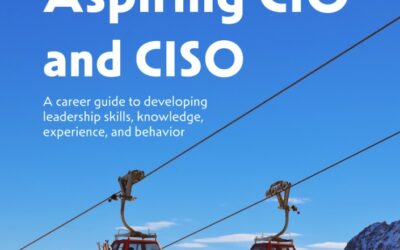Product review: All-New Kindle
Reviewer: Brian Pereira Date: 25 May, 2015
There are three new Kindle e-book readers in the Indian market: Kindle Voyage, Kindle PaperWhite and the All-New Kindle. All three can be purchased from the Amazon.in website (recommended), or from electronics retail outlets. To buy e-books for these devices, you would need to have an account on the Amazon.in website, so register for a free account first.
I’m reviewing the All-New Kindle, which is the most basic model in the trio. It has a 6-inch electronic ink touchscreen display but no back-lighting. As you can see from the image, it’s slightly smaller in length than a standard paperback, and at 191 grams, it’s slightly heavier. It can be held comfortably in the palm of one hand, and pages can be flipped just by touching its screen. It also supports multi-touch: use your two fingers to pinch the screen (reduce font size) or to stretch (expand font size).
For connectivity, this particular device supports Wi-Fi but not 3G. The other models have 3G and you can use Amazon’s Whispernet service free for life.
The All-new Kindle costs Rs 6,000 (all inclusive). It has 4GB of memory, which means it can hold around 2,000 books.
Set up
Mine arrived exactly two days after I ordered it on Amazon.in. The package includes the Kindle device, a multi-language Starter guide, and another booklet with legal terms and safety instructions. There’s a USB cable but no AC adaptor. You can buy that separately, or just use the one that came with your phone.
The device comes pre-charged, so you can switch it on and start using it immediately. Be sure to switch on your home Wi-Fi connection. When I did so, it asked for a GoodReads password. GoodReads is an online community of book lovers who recommend books to friends. Alternatively, you could log in with your Facebook credentials. I chose not to use either for the moment, and just skipped to the next screen.
The device then scans the environment and shows a list of available Wi-Fi networks. Choose yours and enter the network password.
I was surprised to note that my device was already registered by Amazon, as I bought it online. The Amazon staff helpfully named it “Brian’s second Kindle” – I already own another Kindle that I bought a few years ago.
After the first sync with the Amazon cloud, I could see covers of all the e-books I bought from Amazon. The next logical thing to do was to download all those e-books I had purchased (full sync).
Browsing and buying e-books
You can browse the online Kindle store from this device and also buy and download books directly to the device. There’s also an Amazon app, so you can use your smart phone for this same purpose. But in our view, nothing beats surfing the Amazon bookstore through a Web browser and PC. On the Web there’s a lot more information, recommendations and choices displayed. And then there’s the sheer joy of watching colourful book covers, or just having a quick look inside a book, and reading some chapters for free.
And since all the books you buy are stored on the Amazon cloud, you will be able to access them from other devices such as an iPad, mobile phone or PC. Just download the Kindle app, or the Chrome browser extension for Kindle (for reading on a PC).
Using the Kindle
The user manual comes preloaded on the Kindle as a soft book, and I recommend that you go through it to understand its features and the interface.
The features I liked best are the in-built Oxford dictionary and Wikipedia. Tap and hold down on a word and the dictionary pops up with the meaning of the word. With the WordWise feature enabled, words you look up are stored in a new e-book, accessible from the home screen. Other tabs in this dialog box are X-ray and Wikipedia. For Wikipedia, you’ll require W-Fi connectivity, of course.
X-ray lets you explore the “bones” of the book with a single tap. That means you can view all the passages in a book that mention specific ideas, topics and terms. This is something you can’t do with a physical book, and another good reason to buy and use an e-reader. Researchers will love this feature.
Another nice bonus is the built-in Web browser that lets you surf Internet pages, albeit in shades of grey. Amazon calls it the “experimental browser”.
The EasyReach feature makes navigation simple. Tap the top area of the screen for the toolbar. And the main menu can then be accessed by touching an icon on the top-right corner of the screen. Tap almost anywhere else on the screen to turn the page; tap the left side of the screen to go to the previous page. You can also swipe a finger from left to right or from right to left, to turn pages. Tap and hold the top-right corner of the screen to add a bookmark or to view all bookmarks.
There’s also a nice navigation feature that lets you browse through pages and chapters quickly. When reading, swipe up from the bottom of the screen to display the Reading Navigation toolbar. There’s a slider and forward/next buttons for quick navigation.
You can read in portrait or landscape mode. As I explained earlier, font-sizes can be adjusted by pinching or expanding two fingers on the screen.
A soft keyboard pops up when using the search feature. You can also use the soft-keyboard with the experimental browser too.
Conclusion
There are many features that you’ll discover as you use your Kindle, and I could not possibly describe all in this article.
My friends ask me if I enjoy reading real books or prefer the Kindle. Well, my answer to that is both. I bought the Kindle because I read several books at a time and it’s not possible to carry all around with me. I have also run out of storage space at home. And I often refer to the dictionary while reading. With the Kindle, I can access it instantly and also store words for later reference.
It took a while for me to get used to the Kindle. There’s less text per page (compared to a standard novel) so I have to turn pages more often. The readability of the text is better than that of a smart phone, thanks to the brilliant e-ink technology. But remember, this model does not have back-lighting, so I am dependent on ambient light. I suggest you buy a portable clip-on mini reading light. You can get one of these at D-mart or online.
And always remember to take care of your eyes: avoid reading in low-light conditions or in buses (because of the shake).
The Kindle is a worthy investment for book lovers. If your budget allows it, I suggest you go in for the Kindle PaperWhite (Rs 10,000) or the Kindle Voyage (Rs 15,000). These offer a better reading experience and are easier on the eye.
Buy one of these for your kids – it beats an expensive tablet that they’ll use just for playing games. Reading and knowledge is definitely a better pastime.
———————————————————————————————-










